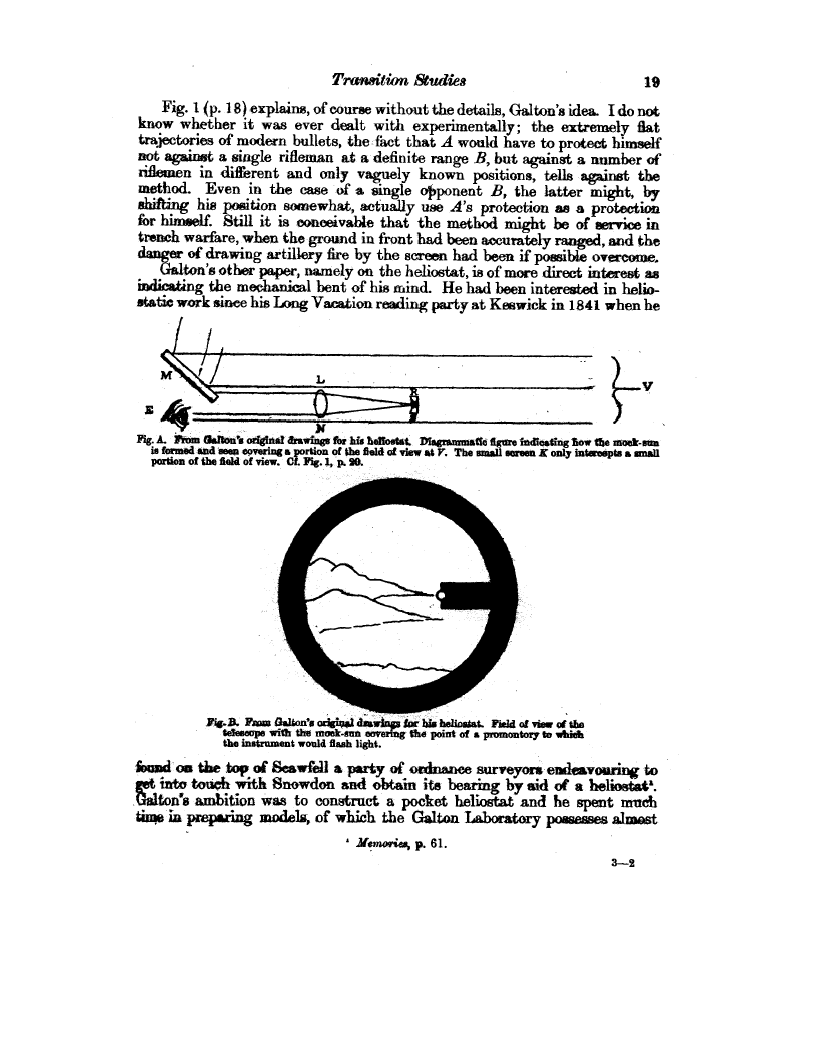Transition Studies 19
Fig. 1 (p. 18) explains, of course without the details, Galton's idea. I do not
know whether it was ever dealt with experimentally; the extremely flat
trajectories of modern bullets, the= fact that A would have to protect himself
not against a single rifleman at a definite range B, but against a number of
riflemen in different and only vaguely known positions, tells against the
method. Even in the case of a single opponent B, the latter might, by
shifting his position somewhat, actually use A's protection as a protectionn
for himse:L Still it is conceivable that the method might be of service in
trench warfare, when the ground in front had been accurately ranged, and the
of drawing artillery fire by the screen had been if possible overcome
Gaalltonn's other paper, namely on the heliostat, is of more direct interest as
iud~ng the mechanical bent of his mind. He had been interested in helio
statiac work since his Long Vacation reading party at Keswick in 1841 when he
Fig. A. Ftom Elation`s orlglnst Jrawfngs for' his helfostat, Dfagrammmatfo figure fndlosting how the moat-nn is formed and seen covering a portion of the field of v at T The small euven g only int&oepts a small portion of Um field of view.
Cf. Fig. i, R 20.
Jr
Pi,rjL Funs 4anon's oriigi 1 dm Sm bas helioatat. Field of vim of the telescope with the meek -sun the point of a promontory to which tine instrument would flash light.
fomd on the top of Seawfell a party of oc&wme surveyors endeavouring to
into tom with Snowdon and obtain its bearing by aid of a helms'.
i3 ambition was to construct a pocket heliostat and he spent much
time in preparing models, of which the Galton Laboratory passes almost
' Mtmorics, p. 61.
3--2

